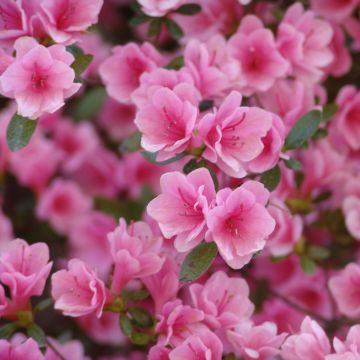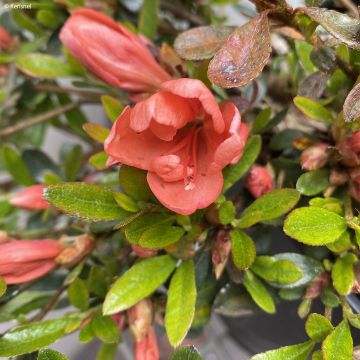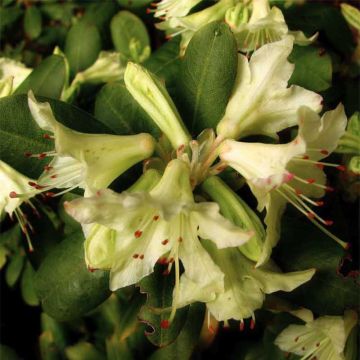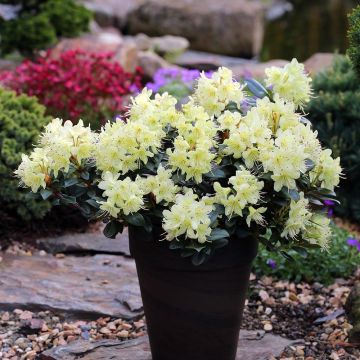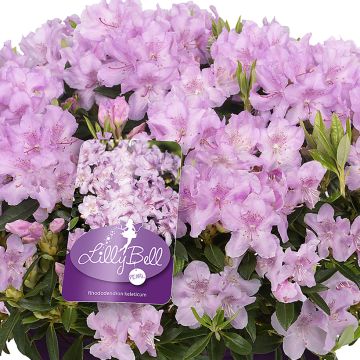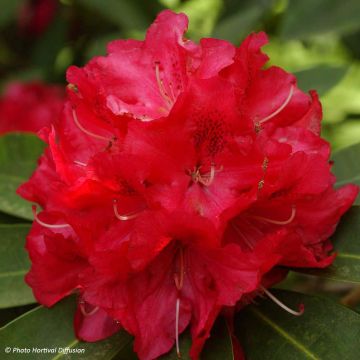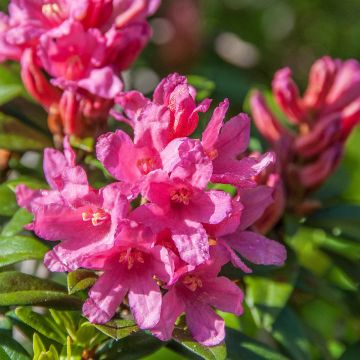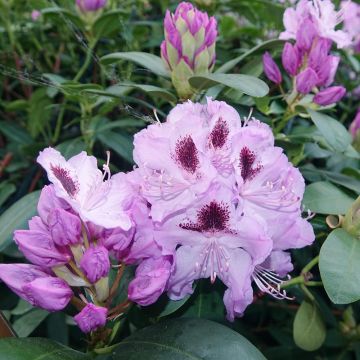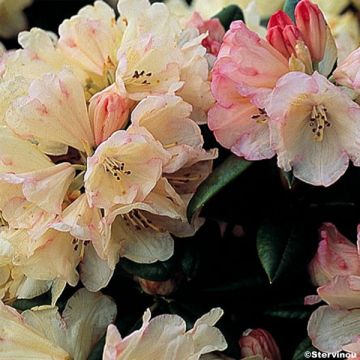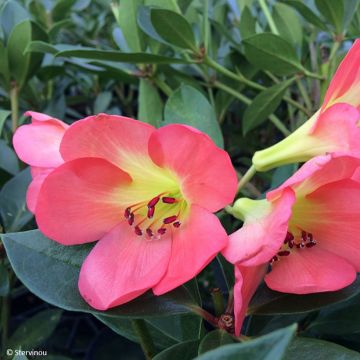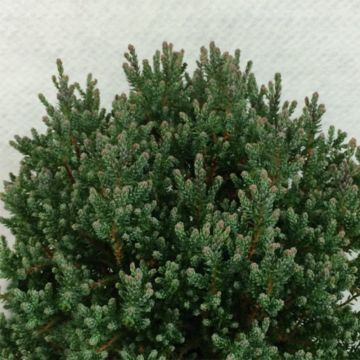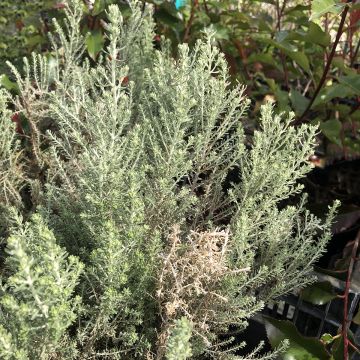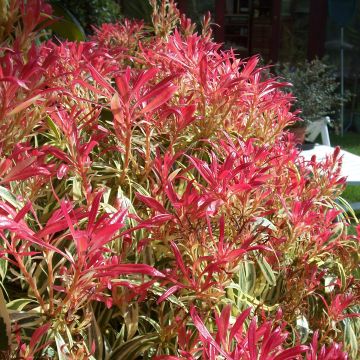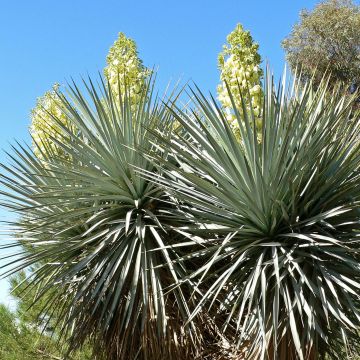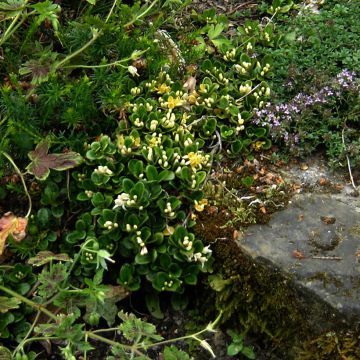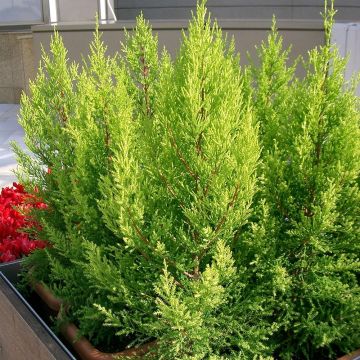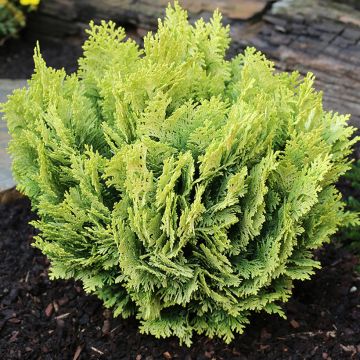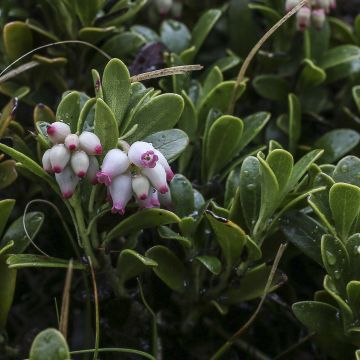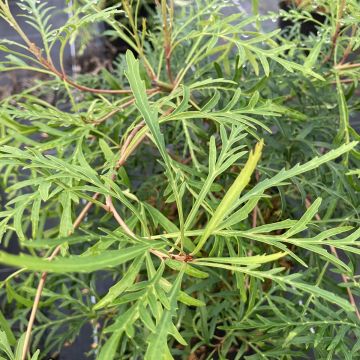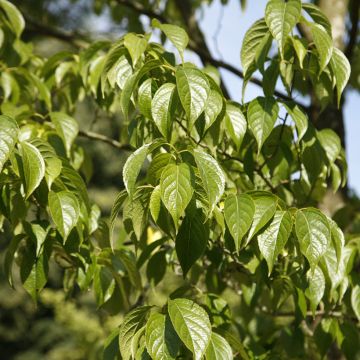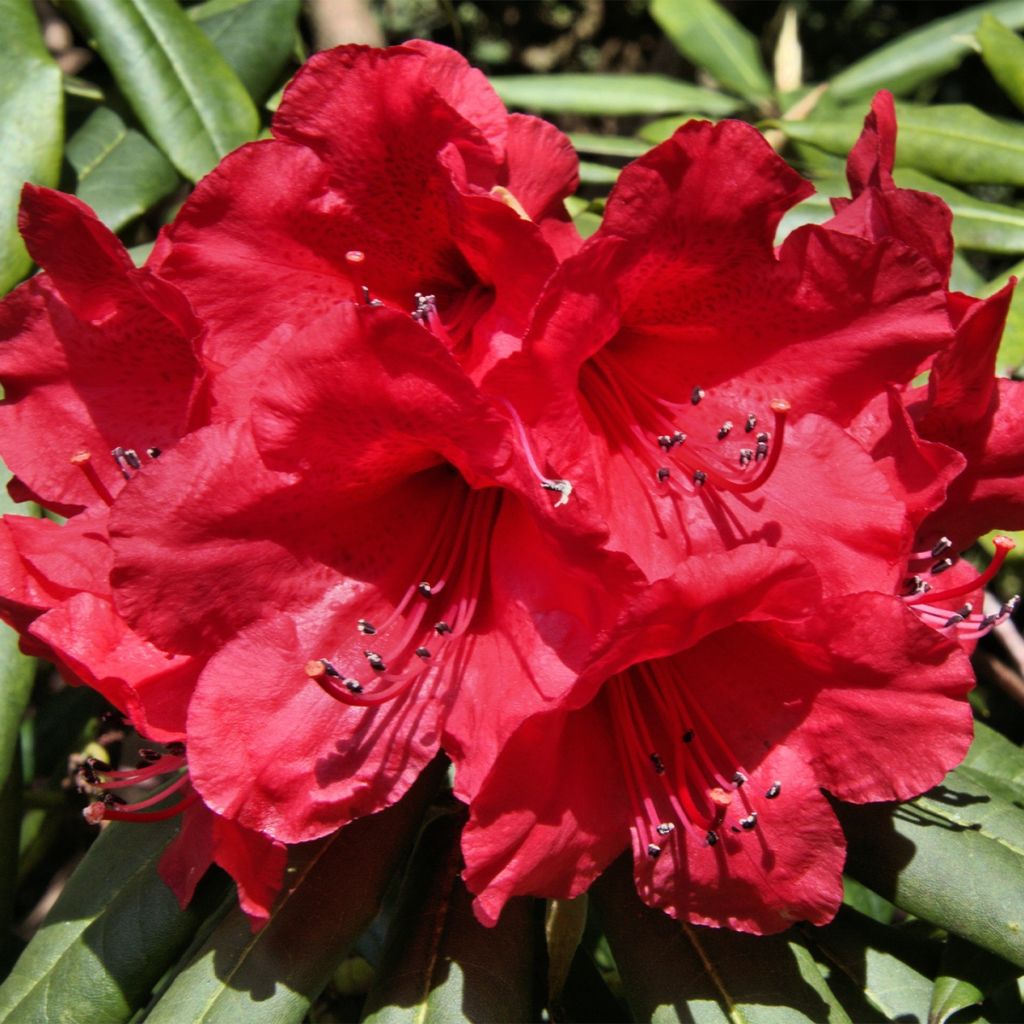

Rhododendron yakushimanum Dopey
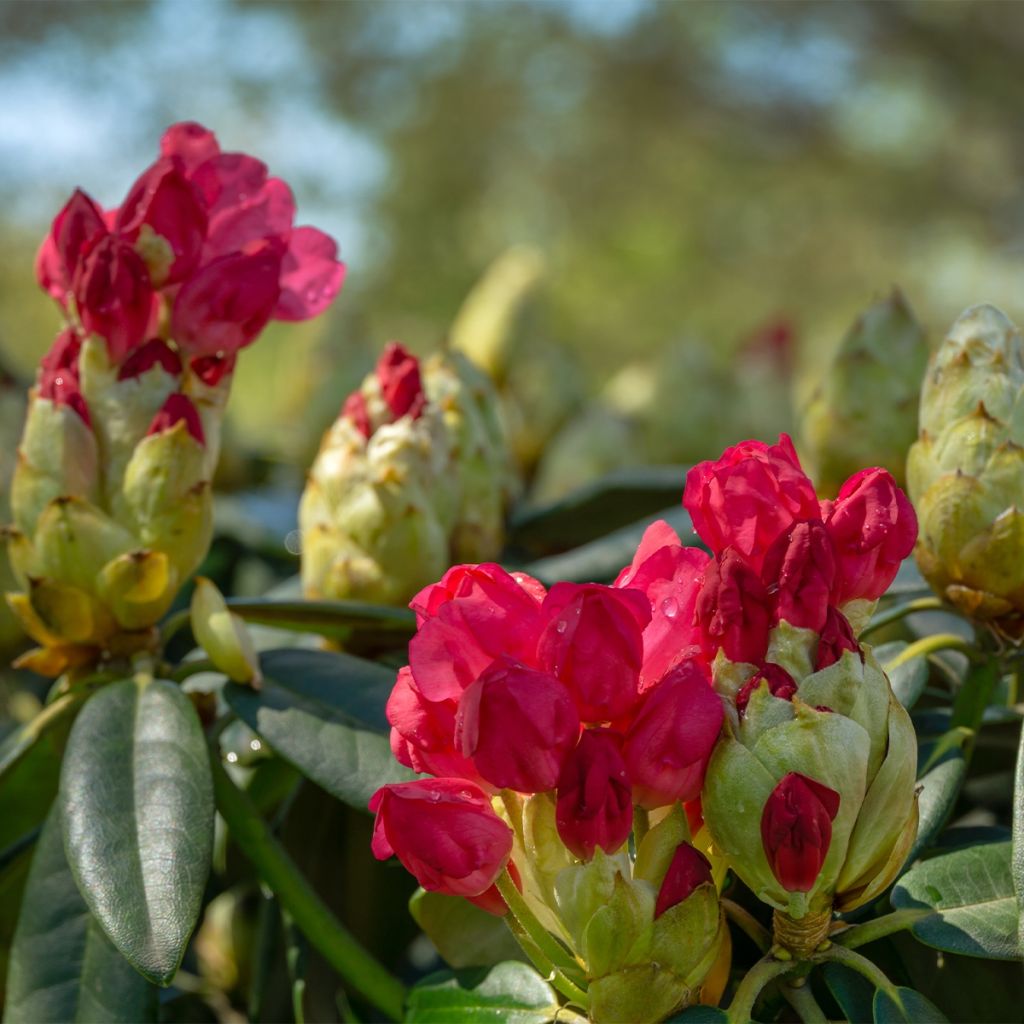

Rhododendron yakushimanum Dopey
Rhododendron yakushimanum Dopey
Rhododendron yakushimanum Dopey
Yakushima Rhododendron, Yakushimanum Rhododendron
This item cannot be shipped to the selected country
Delivery charge from €5.90
More information
Schedule delivery date,
and select date in basket
This plant carries a 24 months recovery warranty
More information
We guarantee the quality of our plants for a full growing cycle, and will replace at our expense any plant that fails to recover under normal climatic and planting conditions.
From €5.90 for pickup delivery and €6.90 for home delivery
Express home delivery from €8.90.
Does this plant fit my garden?
Set up your Plantfit profile →
Description
The Rhododendron yakushimanum 'Dopey' is a compact hybrid that is adorned in spring with a magnificent deep red flowering. On this dense, ball-shaped shrub, the dark green evergreen foliage highlights the abundant flowering. This variety is an excellent choice for a small garden, as well as for container planting. The plant grows in full sun or partial shade, in acidic and moist, but well-drained soil. Hardy, this Rhododendron dislikes limestone, heat, and drought.
The Rhododendrons are plants of the Ericaceae family, which includes about a hundred genera, many of which are common in our gardens. Heathers, Kalmia, Andromeda, Leucothoe, Oxydendrum, or other Gaultheria are valuable in ornamental beds, while Arbutus and especially Bilberry delight us with their fruits. For the most part, these are plants that prefer soils devoid of limestone, with an acidic tendency and humid climates.
Rhododendron yakushimanum ‘Dopey’ is a relatively old variety, which was obtained in England in 1970 within the Waterer Nurseries in Bagshot (in Surrey, south of London). It is a complex hybrid, the result of crossing two other hybrids. One of them is a hybrid of Rhododendron facetum, with red flowers, a mountain species from Burma and China, growing at over 2000 m (6500 ft) altitude, crossed with a Rhododendron 'Fabia' with salmon-pink flowers. The other is the result of a cross between a hybrid of Rhododendron yakushimanum, a slow-growing Japanese species with a compact habit, and a Rhododendron 'Fabia Tangerine', a cultivar with beautiful bell-shaped orange flowers. 'Dopey' is a superb variety that forms a dense bush, with a rounded habit of about 1.00 m (3 ft) to 1.50 m (5 ft) in all directions when mature. Its growth is slow, generally reaching 80 cm (32 in) at the age of 10. Its evergreen leaves in winter, leathery, of a beautiful dark green colour, are elongated and elliptical in shape and cover the plant well. Flowering takes place in April-May in an explosion of colour. Grouped in corymbs of 12 to 16, the large funnel-shaped flowers in bright red to dark red form large clusters. The contrast with the dark foliage makes it one of the most spectacular spring blooms and a major attraction in the garden.
Like all hybrids of yakushimanum, affectionately nicknamed "yak rhodos" by specialists, Rhododendron 'Dopey' is hardy down to -20°C (-4°F). Even though they prefer partial shade exposure, these hybrids can tolerate the sun as long as it is not scorching (morning sun) and their base remains moist. 'Dopey', with its abundant and brightly coloured flowering, will easily adorn a small shaded space in the garden, along with other acid-loving plants. The first layer will be devoted to low plants such as Skimmia japonica Magic Marlot with variegated foliage and fragrant delicate flowers, as well as the small Andromeda 'Blue Ice' with its small blue-green leaves and cute bead-shaped flowers. The Kalmias, or Mountain Laurels, with their superb flowers with fused petals, so original and colourful, can accompany 'Dopey'. And to extend the flowering period of your bed, opt for the irreplaceable Camellias, whose refinement of flowers is matched only by their diversity in both form and colour. Its limited growth allows this 'Dopey' variety to be cultivated in a decorative container on a terrace or next to a pathway.
Report an error about the product description
Rhododendron yakushimanum Dopey in pictures
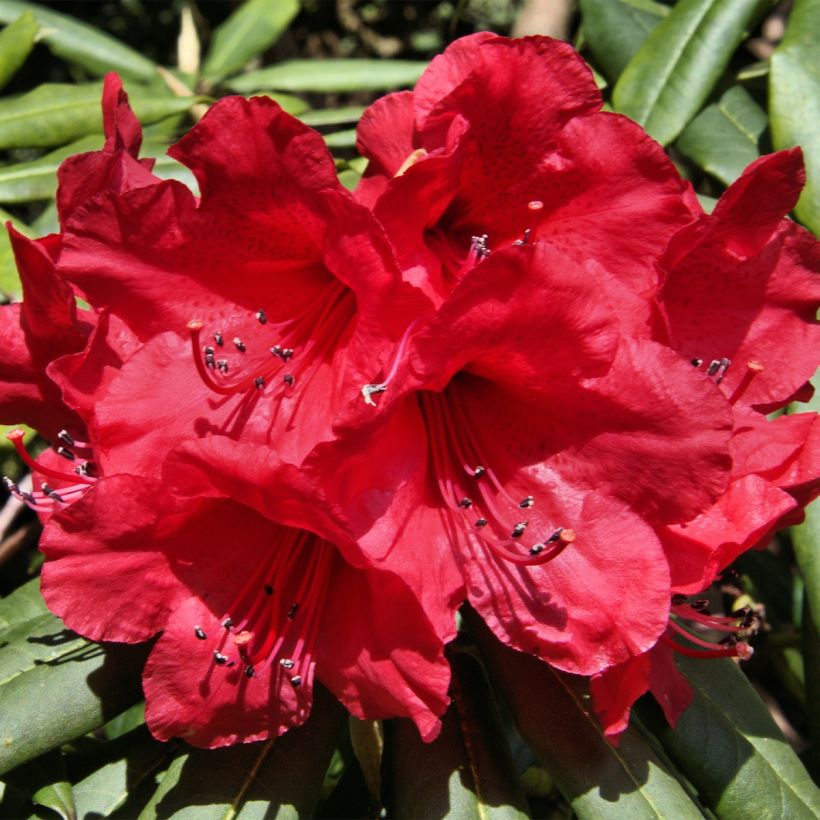

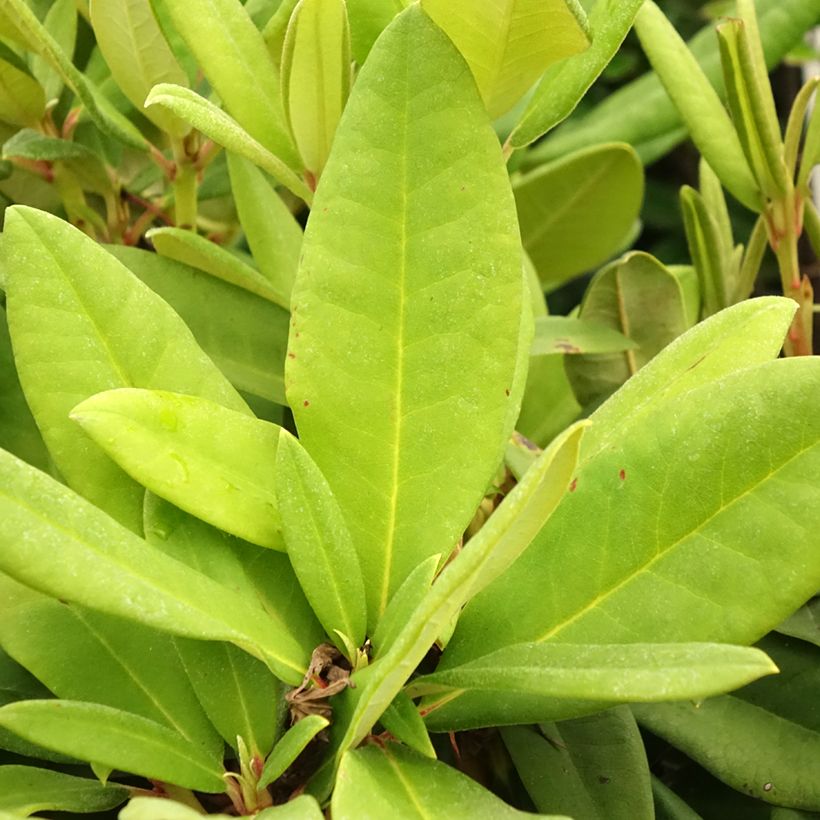

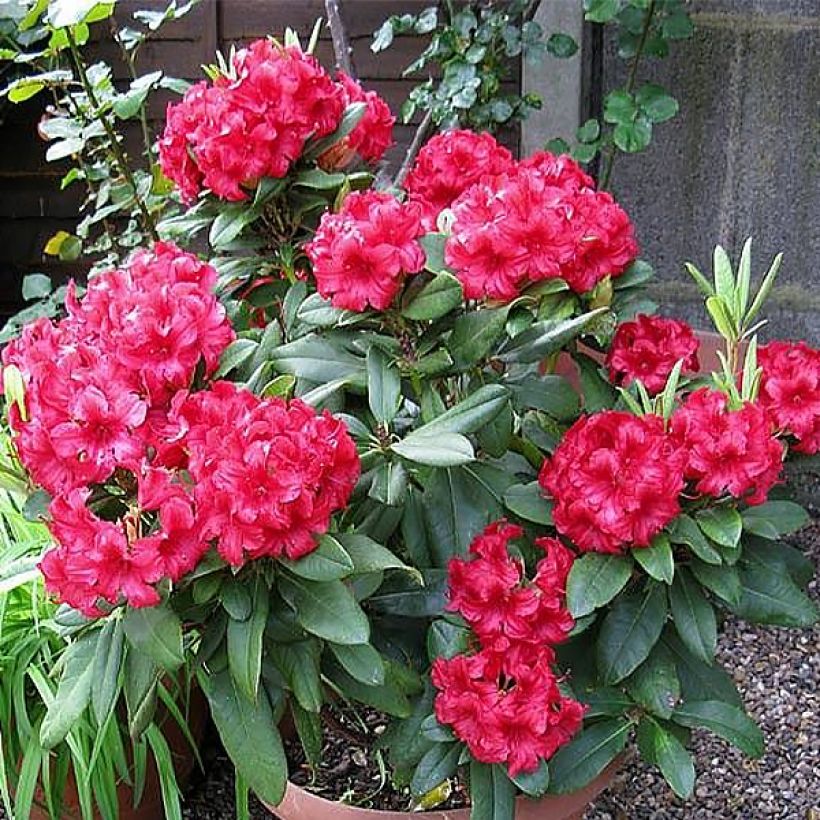

Plant habit
Flowering
Foliage
Botanical data
Rhododendron
yakushimanum
Dopey
Ericaceae
Yakushima Rhododendron, Yakushimanum Rhododendron
Cultivar or hybrid
Other Small Rhododendron
Planting and care
Plant the 'Dopey' Yakushima Rhododendron in a sunny to partially shaded location, protected from cold and drying winds, in a soil that remains slightly moist, humus-rich, and light, with a tendency towards acidity (pH between 4.5 and 5.5). It does not tolerate limestone soils, drought, heatwaves, or heavy waterlogged soils in winter. If the soil does not dry out in summer, this rhododendron will also tolerate non-scorching sun exposure.
Dig a hole three times as large as the pot. Soak the root ball in lime-free water for fifteen minutes and plant the bush at the collar level, in a mixture composed of leaf compost, gravel or pumice, and loam. Water generously and keep the soil moist in summer. Rhododendrons have a shallow root system, so they are susceptible to long periods of drought. Therefore, it is advisable to enrich the soil with humus and provide abundant watering during dry periods. Additionally, this root system is not very strong, which is why heavy soils should be lightened with draining materials (gravel, pumice, clay pellets) at planting. Apply a mulch of shredded pine bark around the base of the bush every spring to maintain soil moisture and acidic pH.
Maintenance simply involves removing faded flowers in summer and cleaning out dead branches. Azaleas and rhododendrons can sometimes be attacked by weevils that eat the edges of leaves and rootlets, as well as the notorious "rhododendron beetle," which does not often cause severe damage. Effective biological solutions are available today to combat weevils. Yellowing of leaves (chlorosis) in rhododendrons indicates poor assimilation of iron from the soil and can lead to premature death of the plant. While limestone (in the soil or irrigation water) is often the cause, poorly drained soil or deeply planted root balls can also explain the phenomenon.
Planting period
Intended location
Care
This item has not been reviewed yet - be the first to leave a review about it.
Evergreen shrubs
Haven't found what you were looking for?
Hardiness is the lowest winter temperature a plant can endure without suffering serious damage or even dying. However, hardiness is affected by location (a sheltered area, such as a patio), protection (winter cover) and soil type (hardiness is improved by well-drained soil).

Photo Sharing Terms & Conditions
In order to encourage gardeners to interact and share their experiences, Promesse de fleurs offers various media enabling content to be uploaded onto its Site - in particular via the ‘Photo sharing’ module.
The User agrees to refrain from:
- Posting any content that is illegal, prejudicial, insulting, racist, inciteful to hatred, revisionist, contrary to public decency, that infringes on privacy or on the privacy rights of third parties, in particular the publicity rights of persons and goods, intellectual property rights, or the right to privacy.
- Submitting content on behalf of a third party;
- Impersonate the identity of a third party and/or publish any personal information about a third party;
In general, the User undertakes to refrain from any unethical behaviour.
All Content (in particular text, comments, files, images, photos, videos, creative works, etc.), which may be subject to property or intellectual property rights, image or other private rights, shall remain the property of the User, subject to the limited rights granted by the terms of the licence granted by Promesse de fleurs as stated below. Users are at liberty to publish or not to publish such Content on the Site, notably via the ‘Photo Sharing’ facility, and accept that this Content shall be made public and freely accessible, notably on the Internet.
Users further acknowledge, undertake to have ,and guarantee that they hold all necessary rights and permissions to publish such material on the Site, in particular with regard to the legislation in force pertaining to any privacy, property, intellectual property, image, or contractual rights, or rights of any other nature. By publishing such Content on the Site, Users acknowledge accepting full liability as publishers of the Content within the meaning of the law, and grant Promesse de fleurs, free of charge, an inclusive, worldwide licence for the said Content for the entire duration of its publication, including all reproduction, representation, up/downloading, displaying, performing, transmission, and storage rights.
Users also grant permission for their name to be linked to the Content and accept that this link may not always be made available.
By engaging in posting material, Users consent to their Content becoming automatically accessible on the Internet, in particular on other sites and/or blogs and/or web pages of the Promesse de fleurs site, including in particular social pages and the Promesse de fleurs catalogue.
Users may secure the removal of entrusted content free of charge by issuing a simple request via our contact form.
The flowering period indicated on our website applies to countries and regions located in USDA zone 8 (France, the United Kingdom, Ireland, the Netherlands, etc.)
It will vary according to where you live:
- In zones 9 to 10 (Italy, Spain, Greece, etc.), flowering will occur about 2 to 4 weeks earlier.
- In zones 6 to 7 (Germany, Poland, Slovenia, and lower mountainous regions), flowering will be delayed by 2 to 3 weeks.
- In zone 5 (Central Europe, Scandinavia), blooming will be delayed by 3 to 5 weeks.
In temperate climates, pruning of spring-flowering shrubs (forsythia, spireas, etc.) should be done just after flowering.
Pruning of summer-flowering shrubs (Indian Lilac, Perovskia, etc.) can be done in winter or spring.
In cold regions as well as with frost-sensitive plants, avoid pruning too early when severe frosts may still occur.
The planting period indicated on our website applies to countries and regions located in USDA zone 8 (France, United Kingdom, Ireland, Netherlands).
It will vary according to where you live:
- In Mediterranean zones (Marseille, Madrid, Milan, etc.), autumn and winter are the best planting periods.
- In continental zones (Strasbourg, Munich, Vienna, etc.), delay planting by 2 to 3 weeks in spring and bring it forward by 2 to 4 weeks in autumn.
- In mountainous regions (the Alps, Pyrenees, Carpathians, etc.), it is best to plant in late spring (May-June) or late summer (August-September).
The harvesting period indicated on our website applies to countries and regions in USDA zone 8 (France, England, Ireland, the Netherlands).
In colder areas (Scandinavia, Poland, Austria...) fruit and vegetable harvests are likely to be delayed by 3-4 weeks.
In warmer areas (Italy, Spain, Greece, etc.), harvesting will probably take place earlier, depending on weather conditions.
The sowing periods indicated on our website apply to countries and regions within USDA Zone 8 (France, UK, Ireland, Netherlands).
In colder areas (Scandinavia, Poland, Austria...), delay any outdoor sowing by 3-4 weeks, or sow under glass.
In warmer climes (Italy, Spain, Greece, etc.), bring outdoor sowing forward by a few weeks.

































